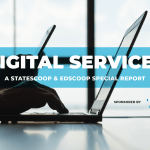To get digital services right, government needs to stay crisis-ready

At U.S. Digital Response, we field weekly calls from government partners looking for support with digital service delivery.
We started early in the COVID-19 pandemic, offering pro bono advice or teams of technologists for surge support to help our partners meet the needs of their communities. Most asks for support were immediate: “How do we set up VPNs for our newly remote workforce?” “How do we scale our unemployment insurance systems to meet an increase in demand from nearly 40 million claims?”
Now, with the surge in federal funding under the American Rescue Plan, governments come to us with a new question: “What should we be doing now to improve our digital service delivery over the next decade?”
Our answer? Stay in crisis mode just a little while longer. Getting digital service delivery right goes beyond buying the ideal checklist of products from the ideal vendors or upgrading a system from one language to another. It is a way of working – one where you, as a government, can use technology to respond to the needs of your community at the speed that they arise.
Here are four organizational habits state leaders used this year to respond to crisis that are consistent with effective digital service delivery:
1. Stay urgently curious and build tools for learning.
Even the most seasoned government leaders were confronted with new challenges in 2020, and they set up their organizations to act in “beginner’s mind,” an approach in which even the most experienced person looks at a challenge with fresh eyes.
Rather than rerunning community outreach programs like in prior years, program directors expected the needs of their communities to change and made room for their delivery of those programs to evolve. Louisiana Department of Health officials realized the staffing needs of its hospitals were far more dynamic than usual, and partnered with U.S. Digital Response to build Louisiana Health Work Connect, a tool to aggregate demand daily from health care facilities and dynamically match them with available workers. Within its first two weeks, more than 100 nursing homes and hospitals posted hundreds of job openings and more than 230 job seekers signed up.
2. Create flexibility in resources.
As state leaders discovered new needs in their communities, they recognized a need for flexibility in their responses. This made leaders forego traditional, multi-year contracts and budgets in favor of more dynamic team and procurement options.
The Colorado Digital Service led some of the state’s COVID-19 response efforts because its multidisciplinary team and broad purview let it move quickly from challenge to challenge.
In Wisconsin, U.S. Digital Response and 18F teamed up to support the Department of Workforce Development in a modular contracting approach to updating its unemployment insurance system. “We are taking a nimbler approach to modernization that can provide faster results with the federal funding that is available,” DWD secretary-designee Amy Pechacek said when the project was announced in March.
3. Launch fast, refine as you go.
A hallmark of digital service delivery and crisis response is getting something of value to the people in need as quickly as possible, and iterating from there.
The New Jersey Office of Innovation recognized that it would take time to create a comprehensive vaccine appointment finder, but rather than waiting until all possible data sources were available, the state partnered with U.S. Digital Response and other community organizations to build an internally-facing starter version that call center employees began using within two days to book appointments. That tool later scaled to the public version launched by Gov. Phil Murphy earlier this month.
4. Share information liberally and scale what works.
Government’s competitive advantage over the private sector is that it can collaborate instead of compete. We worked with more than 200 government agencies and NGOs over the last year on rapid response efforts, and we were inspired to see the governments that did something well immediately ask us to share that tool with other departments and states. Rhode Island and Ohio both used and contributed to a grant finder and stimulus funding tracker during the CARES Act implementation that is now being used as a template for ARPA funds. Anchorage, Alaska, developed a proactive way to text message small businesses about available funding to keep them afloat and shared its approach with cities across the country.
As 2021 kicks into gear and you start planning your digital service investments, don’t give up on the habits that carried you through 2020. States’ priorities will keep changing, your constituents’ needs will stay just as urgent and you will have a continuous opportunity to take advantage of all that your neighboring governments are learning in the coming year. Keep the best of your crisis response instincts in place.
And remember what became possible when your organization had a beginner’s mindset. Build your digital service teams and infrastructure with that possibility in mind.
Jessica Cole is the chief operating officer and co-founder of U.S. Digital Response.
This piece is part of StateScoop & EdScoop’s Special Report on Digital Services.

This story was featured in StateScoop Special Report: Digital Services (2021)






